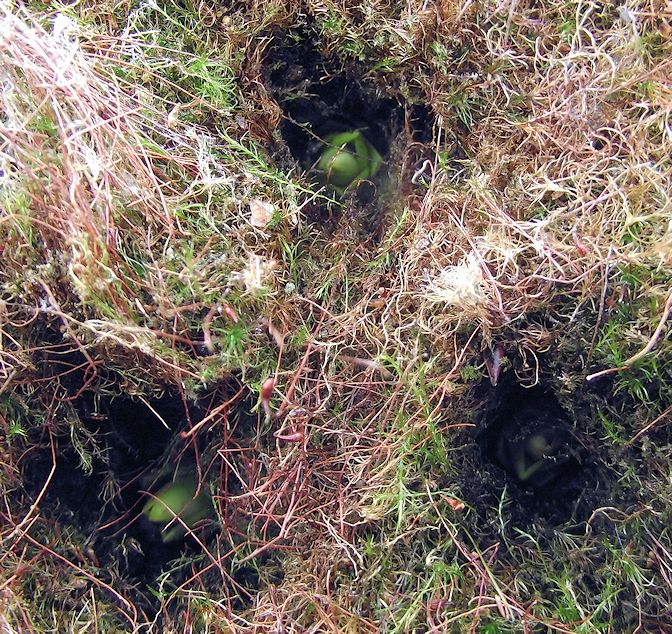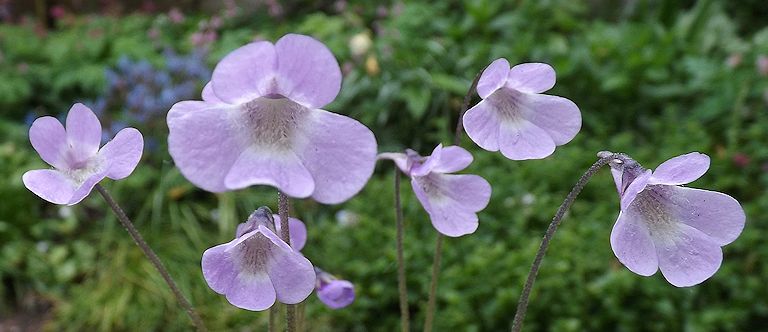|
|
Post by fredg on Jul 9, 2015 15:36:06 GMT
|
|
|
|
Post by glacialis on Jul 9, 2015 15:42:42 GMT
Beauties.
|
|
muel
New Member

Posts: 11 
|
Post by muel on Jul 24, 2015 21:45:55 GMT
Looking forward to the one you convinced me to buy to flower now  |
|
jeff
Junior Member
 
Posts: 62
|
Post by jeff on Dec 28, 2015 16:46:28 GMT
Bonjour very very pink your P.corsica  jeff |
|
|
|
Post by fredg on Dec 28, 2015 19:41:27 GMT
They are Jeff. That's a true representation of the colour too
|
|
jeff
Junior Member
 
Posts: 62
|
Post by jeff on Dec 29, 2015 7:49:07 GMT
Bonjour
for me those one are more white like P.corsica f pallidula or more blue like the type or the form caerulescens .
I grow them always outdoor ,in blond peat ,with a high substrat humidity
jeff
|
|
|
|
Post by fredg on Apr 4, 2016 16:14:32 GMT
These three are 2cms (0.8") below surface just pondering if it's warm enough to come out yet. P. grandiflora and vulgaris broke surface some time ago.  They're depicted now more open as I had to check for eggs, I found some too with the little shells already formed. The snails don't seem to mind depositing in ready made holes. |
|
jeff
Junior Member
 
Posts: 62
|
Post by jeff on Apr 5, 2016 6:46:18 GMT
Bonjour
a lot of my temperate ping are in flower actually , my corsica f pallidula in seed cap.
you do not relieved around your hibernaculae ?
jeff
|
|
|
|
Post by fredg on Apr 5, 2016 7:50:11 GMT
you do not relieved around your hibernaculae ? I believe you mean removing the gemmae. I'm not sure why you ask as there are no gemmae in the photo. I remove gemmae when they form in the autumn carefully using curved tweezers. This leaves the roots undisturbed and the plant able to pull itself down in the medium to overwinter. |
|
jeff
Junior Member
 
Posts: 62
|
Post by jeff on Apr 5, 2016 9:11:31 GMT
Bonjour
no, clean a little around the hibernaculum to prevent it from being smothered.
I always do this ,on all my temperate ping .
jeff
|
|
|
|
Post by fredg on Apr 5, 2016 10:11:27 GMT
no, clean a little around the hibernaculum to prevent it from being smothered. No, never. I don't see the point of changing a condition that is perfectly natural. I prefer to leave plants as much in their natural condition as possible. After all they have far more experience than we do. Rather than look at the situation as smothering I tend to regard it as the plant utilising natural insulation |
|
jeff
Junior Member
 
Posts: 62
|
Post by jeff on Apr 6, 2016 7:58:34 GMT
Bonjour like you want , it is your choice for me there is a risk of smothering. In France, many populations of Pinguicula disappear like this, especially in plain as vulgaris and lusitanica ,for example on my department where we have been forced to restored sites. for corsica, all do not grow 'in situ' in those background  may be on the podzol and even  this year I'm going to see 'in situ' some populations corsica ( type, subsp pallidula, subsp caerulescens ), then I would have a better idea of their backgrounds jeff |
|
|
|
Post by fredg on Apr 6, 2016 11:10:10 GMT
If we all grew plants exactly the same there wouldn't be a lot to discuss. It's always personal choice.
|
|
jeff
Junior Member
 
Posts: 62
|
Post by jeff on May 4, 2016 14:43:57 GMT
 pinguicula corsica f pallidula  jeff |
|
|
|
Post by fredg on May 11, 2016 11:38:30 GMT
These are in the greenhouse on a lower shelf.  |
|